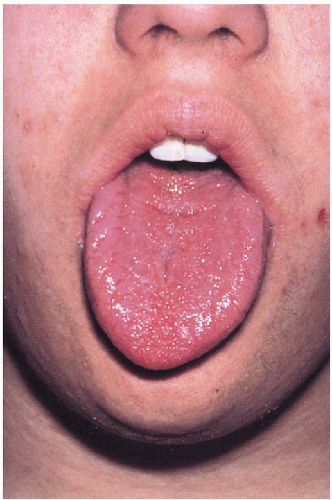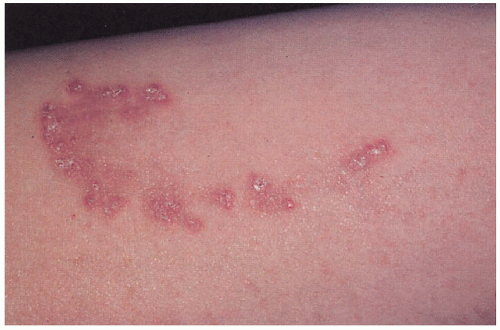Disorders with Chromosome Abnormalities
Kurt Hirschhorn M.D.
Judith Willner M.D.
Clinical Pearls
(KH)
(JW)
Down Syndrome
Synonym
Trisomy 21 syndrome
Inheritance
Approximately 2% of cases secondary to an inherited translocation; otherwise not inherited
Prenatal Diagnosis
Amniocentesis/chorionic villus sampling (CVS): chromosome analysis reveals trisomy 21
Ultrasound: (second/third trimester)—constellation of abnormalities may suggest the diagnosis: hydrops fetalis, cystic hygroma, cardiac defects, nuchal edema, prune belly anomaly, duodenal obstruction Increased risk with low levels of alpha-fetoprotein in maternal serum—not specific or diagnostic for Down’s syndrome
Incidence
Approximately 1:700, 45% of the affected with mothers >35 years old worldwide; 1:1,100, 20% of the affected with mothers >35 years old in the United States; approximately 1% recurrence risk for parents with affected trisomy 21 child because of nondisjunction; approximately 50% spontaneously abort in second trimester; M=F
Age at Presentation
Birth
Pathogenesis
Approximately 95% of cases secondary to nondisjunction at chromosome 21 during meiosis in one of the parents (maternally derived in 95%) resulting in trisomy 21; approximately 4% to 5% are secondary to a translocation (inherited and de novo); the remaining 1% to 2% are mosaics, occuring as a postzygotic event
Key Features
Skin
Single palmar crease, flat nipples, increased nuchal skin folds in infancy, syringomas, elastosis perforans serpiginosa; xerosis and lichenification with age; increased infections
Hair
Alopecia areata
Craniofacial
Brachycephaly, flat face, flat nasal bridge with small nose, flat occiput; short, broad neck; small ears with dysplastic/absent earlobes
Eyes
Epicanthic folds, upslanting palpebral fissures, Brushfield spots, fine lens opacities, strabismus
Mouth
Small mouth with protruding scrotal tongue; fissured, thickened lips; dental anomalies, periodontal disease
Musculoskeletal
Short stature, hypotonia in infancy; small, broad hands with shortened metacarpals and phalanges; clinodactyly of fifth finger, wide gap between first and second toes, odontoid abnormalities, atlantoaxial instability; wide, flat iliac wings with narrow acetabular angle
Central Nervous System
Mental retardation (IQ 30-50), seizures (10%)
Cardiovascular
Congenital heart disease (atrioventricular communis and ventricular septal defects most common)
Gastrointestinal
Duodenal atresia most common; other anomalies
Hematologic
Acute myelogenous leukemia; transient leukemoid reaction and polycythemia (newborns); immunodeficiency
Endocrine
Autoimmune hypothyroidism > hyperthyroidism
Genitourinary
Micropenis, decreased male libido, increased impotency
Differential Diagnosis
None
Laboratory Data
Chromosomal analysis
X-ray pelvis
Thyroid function tests
Complete blood count
Echocardiogram
Management
Thorough physical examination and follow-up with primary care physician Referral to symptom-specific specialist—cardiac surgeon/cardiologist, general surgeon, hematologist/oncologist, endocrinologist
Prognosis
While many are now living longer into their fifth and sixth decades of life, average life expectancy is still approximately 35 years; increased mortality in infancy secondary to congenital heart disease, neoplasms
Clinical Pearls
Fetal cells have been concentrated in maternal serum and fluorescent in situ hybridization has detected cells with 3 copies of 21… A more promising approach to noninvasive prenatal screening is first-trimester ultrasound looking for increased nuchal fold with abnormal maternal serum markers… Standard screening criteria include 35 and over, family history, previous child with Down’s, translocation carrier… Many laboratories screen pregnant women who are 30 and over… Two clinical pearls I (KH) particularly like are the increased skin folds in the back of the neck and the “X” that is seen across the baby’s crying face… When the baby’s face squinches up, the upward slanted palpebral fissures appear to run in a line with the nasal-labial folds creating the “X”… I (JW) look for an absence of breast tissue in a full-term baby… They all get an echo before they leave the hospital after birth… Congenital heart defects are the most common cause of early death… Our heart surgeons are moving in and repairing these kids within the first months of life… Later on they die of infection… Watch for Hirschsprung disease… The poorly formed odontoid process can shear their spine and leave them quadriplegic… Stimulation programs work best in Down’s… Must remind parents to spend time with other children as well… Get other children involved in the care and stimulation of the baby… For reasons that are unclear, children with Down’s love music… They calm down… They listen to it… Current recommendations are to mainstream high-functioning children with Down’s as long as possible… They’ll modify their behavior based on what they see around them… The Special Olympics has been great for their self-image… Educating Peter, a movie about mainstreaming a child with Down’s, is beautifully done and should be seen. KH, JW
 12.1. Single horizontal palmar crease, single flexion crease on fifth finger, short fingers with broad hand. (1) |
 12.2. Macroglossia with scrotal fissures. (133) |
 12.3. Elastosis perforans serpiginosa in a patients with Down syndrome. (133) |
|
Turner Syndrome
Synonym
Gonadal dysgenesis
XO syndrome
Ullrich-Turner
Inheritance
Not inherited
Prenatal Diagnosis
Amniocentesis/CVS—chromosome analysis reveals XO karyotype Ultrasound: (second trimester)—constellation of findings suggest diagnosis: cystic hygroma, hydrops fetalis, chylothorax, ascites
Incidence
1:2,500 to 5,000 female births; over 95% spontaneously abort in first trimester
Age at Presentation
Newborn: small for gestational age (SGA) baby with redundant neck skin, peripheral edema
Childhood: short stature, left-sided cardiac/aortic anomalies
Teenager: short stature, delayed puberty with primary amenorrhea
Pathogenesis
Partial or total loss of one X chromosome (XO monosomy) secondary to nondisjunction during gametogenesis in mother or father or a postfertilization mitotic error; 10% to 20% secondary to mosaicism
Key Features
Skin
Redundant neck folds/webbed neck (remnant of fetal cystic hygroma), multiple pigmented nevi, increased keloid formation
Hair
Low-set nuchal hairline
Nails
Hypoplastic, hyperconvex, deep-set
Craniofacial
Triangular facies with micrognathia, low-set ears, high-arched palate, ptosis
Musculoskeletal
Short stature, shield chest with wide-set nipples, cubitus valgus, shortened fourth and fifth metacarpals
Lymphatic Vessels
Congenital hypoplasia of lymphatic channels with resultant transient peripheral lymphedema of hands and feet
Endocrine
Primary amenorrhea, gonadal dysgenesis/streak gonads, infertility
Cardiovascular
Multiple anomalies (coarctation of the aorta with secondary hypertension most common)
Kidney
Multiple anomalies (horseshoe kidneys most common)
Central Nervous System
Spatial relations deficit, hearing impairment
Laboratory Data
Chromosome analysis
Echocardiogram
Abdominal ultrasound
Management
Thorough physical examination by primary care physician
Referral to endocrinologist—cyclic estrogen replacement in second decade, growth hormone therapy
Referral to surgeon—repair of coarctation, webbed neck, renal anomalies
Prognosis
Normal life span with treatment of congenital anomalies; may have severe psychosocial impact given short stature, infertility, body habitus
Clinical Pearls
The clue in utero is an SGA fetus with a cystic hygroma on ultrasound… Some have picked up the cystic hygroma with a vaginal probe in the first trimester… The cardiologist seeing a girl with a coarctation of the aorta must check chromosomes… The girl who doesn’t grow or stops growing needs to be evaluated for Turner’s… Also, the girls with primary amenorrhea are worked up… Every kid gets an ultrasound of the heart and kidneys… Recently, a combination with low-dose estrogen-progesterone and growth hormone cycling in the first decade is being used so that they can develop secondary sexual characteristics and be brought onto the normal growth curve… Interestingly, the only thing wrong with their minds is that they have a poor sense of spatial relations… They have difficulty in mathematics, geometry… Poor sense of direction… Orientation is a problem… Plastics can tack down the webbed neck… Intelligence is perfectly normal… They may be high-functioning individuals… Although sterile, they can carry to term with donated ovum and hormonal supplementation… Must look for presence of 46 XY line (rule out mosaicism) because of risk for gonadal malignancy. KH, JW
Stay updated, free articles. Join our Telegram channel

Full access? Get Clinical Tree









